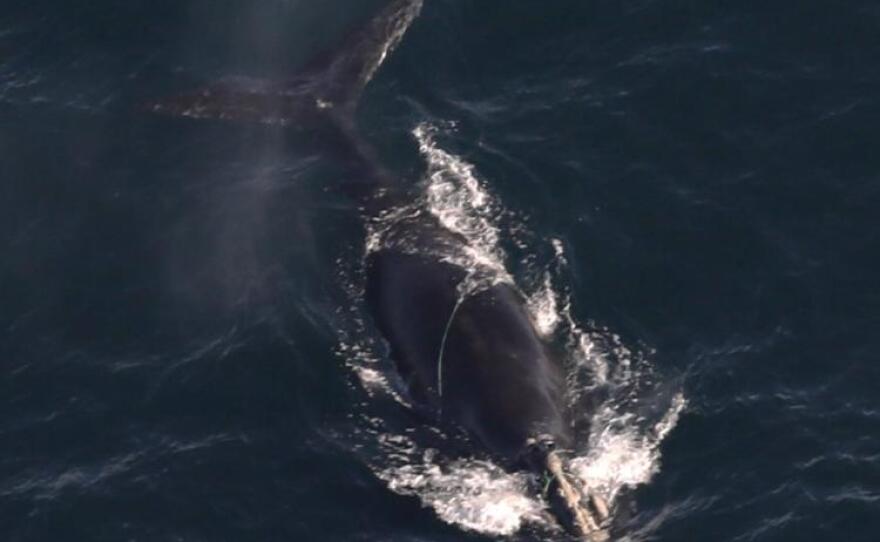Researchers have found three critically endangered right whales entangled off the U.S. East Coast in just over a week. Two were seen 50 miles southeast of Nantucket.
Entanglements and boat collisions are the leading cause of death for the species; their population has fallen to just about 372, making them the most endangered whales in the world.
One of the entangled whales seen off of Massachusetts is an adult female identified as #4120. Officials took photos that show two ropes coming out of the left side of her mouth and trailing more than halfway down her body.
She’s likely to survive the injury, officials said, though it could impair her wellbeing. But officials said a 3-year-old male known as #5110 seen in the same area with “thick” lines wrapped once across his head and once across his back is unlikely to share the same fate.
“After reviewing the entanglement, NOAA Fisheries biologists have made a preliminary determination that it meets the Unusual Mortality Event criteria as a ‘serious injury’ case,” according to a statement from the National Marine Fisheries Service. “This designation signifies #5110 is likely to die from this injury.”
The whale had most recently seen gear-free in Cape Cod Bay in April.
Scott Landry, director of the Marine Animal Entanglement Response Program at the Center for Coastal Studies, in Provincetown, warned that another male spotted off the coast of North Carolina this week is also likely to die from his entanglement.
“It's entangled in such a way that the whale can't open its mouth to feed. So its lifetime is finite now,” Landry said. “It's whatever fat reserves it has on its body.”
Researchers from the New England Aquarium have found that over 85 percent of right whales are entangled at least once in their lives, so it’s not all that surprising, Landry said, to see three entangled whales in such a short period.
“It’s unusual but typical,” Landry said. “The number of entanglements for the species is high enough that the harder we work at finding whales… the more we’re going to discover.”
In fact, he said he’s aware of at least seven live entangled North Atlantic right whales at the moment — and there are almost certainly more that have not been spotted.
Still, there is some hope. Members of a disentanglement network that stretches from Florida to Canada are alert and ready to free the whales — though, Landry said, it will be difficult.
“On top of the lack of daylight, we just generally don't have many good weather days at this time of year,” he said, “and don't expect to have any for quite some time.“
Boaters are encouraged to report sightings of entangled, injured, or dead whales to experts:
- Greater Atlantic Marine Mammal Stranding Hotline for Maine to Virginia: (866) 755-6622
- Southeast Marine Mammal Stranding Hotline for North Carolina to Texas: (877) WHALE-HELP ((877) 942-5343)
- U.S. Coast Guard: VHF Channel 16
If safe, and from the legally required 500-yard distance, officials urge mariners to take photos or video and note the GPS coordinates to share with authorized responders.






